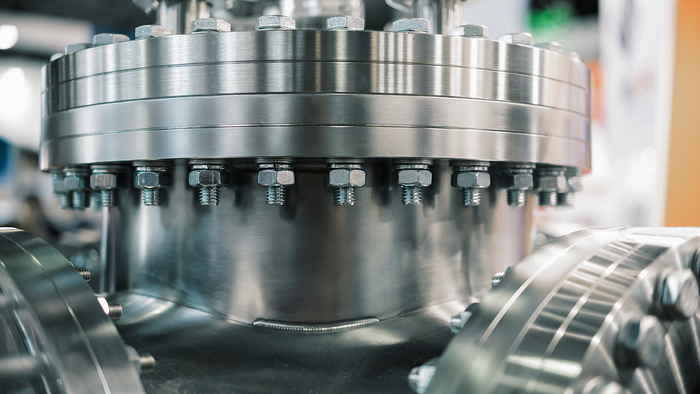When To Use Lap Joint Flange: A Practical Guide
Have you ever worked with pipes and connections in industries? You might know about a Lap Joint Flange (LJF)! But don’t worry if you haven’t heard of it; we’ll explain it! LJF is a special flange that connects pipes securely.
Knowing when and where to use LJF is vital for a smooth and efficient piping system. Let’s explore the basics and practical uses of lap joint flanges together!

What is a Lap joint flange?
Think of LJF as a collar-like connector that wraps around the end of a pipe instead of being directly welded or bolted to it. This special design makes assembling and taking apart the piping system super easy.
LJF has two main parts: the “stub end,” the collar-like part, and the backing flange, a flat plate connected to the equipment or pipe. It’s like a puzzle piece that perfectly holds everything in place.
When to use the lap joint flange?
- Low-pressure and Non-critical applications
LJFs are great for systems with low pressure, like water supply in homes or offices or irrigation systems, ensuring smooth water flow without leaks.
2. Systems requiring frequent dismantling and inspection
Equipment needs regular check-ups and maintenance in chemical processing or food and beverage industries. LJFs are the preferred choice because they make it easy to take apart sections of the piping system whenever necessary. This helps with cleaning, fixing, and inspecting everything efficiently.
3. Reducing stress on piping systems
The system can get stressed when pipes are big or carry hot materials. To fix this, we use LJFs. They reduce stress and make the pipes more flexible, stopping damage and leaks.
When not to use lap joint flange?
- High-pressure applications
LJFs might be better suited for systems that operate under very high pressure. Flanges that offer stronger connections, like Weld Neck Flanges, are preferred for such applications.
2. Systems with severe vibration and stress
If the piping system experiences a lot of vibration or movement, LJFs might not be the most reliable choice. Flanges with more rigid connections are needed in such cases to ensure stability.
3. Applications with strict leakage requirements
LJFs may not be the best choice for systems that cannot tolerate leaks. Other flange types, like Ring Type Joint Flanges, work better in such cases.
Proper installation and maintenance of LJF
For LJFs to work their best, you must install and maintain them properly. Here’s how:
1.Clean the pipe end and the inside of the LJF components.
2. Slip the stub end onto the pipe.
3. Align the backing flange with the pipe and slide it over the stub end.
4. Tighten the metal sticks through the tiny gaps so things stay together.
Recommended tightening procedures for bolts: Tighten the bolts gradually and evenly, using a criss-cross pattern to ensure a uniform and secure fit.
Routine inspection and maintenance guidelines: Regularly inspect LJFs for signs of wear, corrosion, or leaks.
Lubricate bolts and nuts as needed to maintain ease of disassembly.
LJF standards and regulations
LJFs must meet specific industry standards to ensure safety and compatibility. The ASME B16.5 and ASME B16.47 are common standards used for LJFs. It’s essential to follow these guidelines and any other industry-specific regulations.
Conclusion
Lap Joint Flanges offer a practical and flexible solution for connecting pipes in various industries. Understanding when and where to use LJFs can significantly affect the efficiency and reliability of a piping system.
By considering factors like flange thickness, pressure, stress, and leakage requirements, you can confidently choose LJFs where they best fit. Regular maintenance and adherence to industry standards ensure safe and smooth operations for years.
FAQs
1. Can LJF be used in high-temperature applications?
LJFs are suitable for applications with moderately high temperatures. However, other types of flanges may be more appropriate for extremely high-temperature systems.
2. How do I choose the correct LJF size for my piping system?
Consulting with a professional engineer or referring to industry standards can help you select the right LJF size for your specific piping requirements.
3. What is the typical lifespan of a Lap Joint Flange?
The lifespan of LJFs depends on various factors, including the application, environmental conditions, and maintenance practices. Checking often and taking care of LJFs can make them last much longer.
